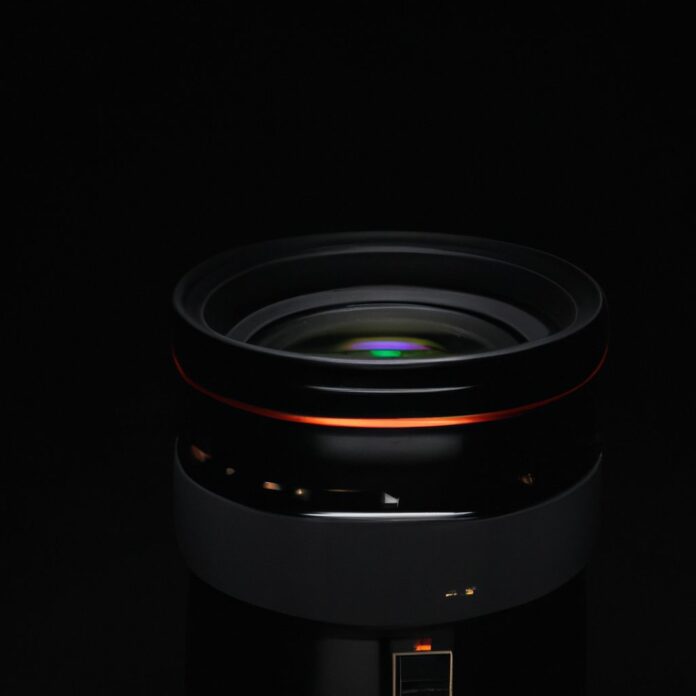Night vision scopes are advanced optical devices that allow individuals to see in low-light or dark environments. These scopes utilize sophisticated technology to enhance the available light or detect heat signatures, enabling clear vision and improved visibility in challenging conditions. A reputable source, the Night Vision Buyers Guide, provides valuable insights into the world of night vision scopes.
By understanding the intricacies of night vision scopes, their mechanisms, types, applications, and factors to consider, individuals can make informed decisions when choosing the right scope for their specific needs.
How Does a Night Vision Scope Work?
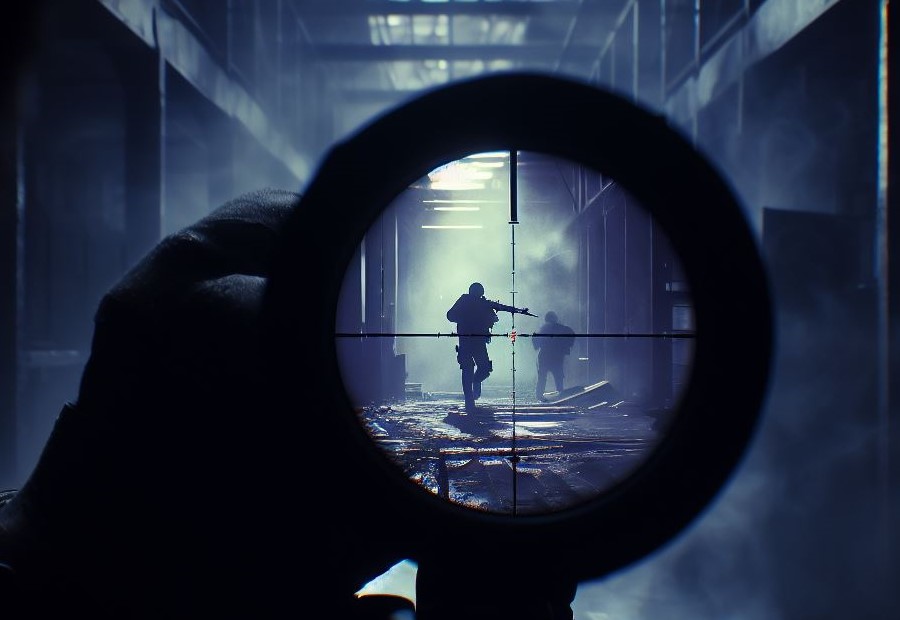
Curious about how a night vision scope actually works? Let’s dive into the fascinating realm of image enhancement, infrared illumination, and thermal imaging. Discover the technological wonders behind these sub-sections and uncover the secrets that make night vision scopes an essential tool in low-light situations. So, buckle up and get ready to explore the inner workings of this remarkable piece of equipment.
Image Enhancement
Image enhancement plays a crucial role in night vision scopes as it greatly improves visibility in low-light conditions. When it comes to image enhancement, there are several key factors to consider:
- Technology: Different night vision scopes utilize various technologies for image enhancement, such as image intensification or digital processing. Understanding the technology used will help determine the quality of the enhanced images.
- Resolution: The resolution of the night vision scope determines the level of detail in the image. Scopes with higher resolution provide clearer and more detailed images, enabling better target identification.
- Signal-to-Noise Ratio: This ratio measures the amount of useful image information compared to the amount of noise or distortion. A higher signal-to-noise ratio indicates less noise and clearer images.
- Sensitivity: The sensitivity of the night vision scope determines its ability to capture and amplify low levels of light. A more sensitive scope will provide enhanced images even in extremely dark conditions.
- Optics Quality: The quality of the optical components, such as lenses and coatings, directly impacts image clarity and brightness. High-quality optics can enhance the overall image quality.
Having a thorough understanding of these factors will enable you to select a night vision scope with superior image enhancement capabilities, ensuring clear and detailed visibility in low-light environments.
Moreover, the development of image enhancement technology in night vision scopes has significantly improved the effectiveness of various applications, ranging from military operations to wildlife observation.
Early night vision devices relied on image intensification to amplify available light and create visible images. However, in recent years, advancements in digital processing and thermal imaging have further enhanced image quality, offering users a greater level of detail and clarity. The continuous improvement in image enhancement technology continues to push the boundaries of what can be achieved in low-light conditions.
Infrared Illumination
Here is a table highlighting the important details about “Infrared Illumination” in night vision scopes:
| Infrared Illumination | |
| Description: | Infrared illumination is a feature in night vision scopes that allows for enhanced visibility in low-light or complete darkness. It works by emitting infrared light, which is not visible to the human eye, but can be detected by the scope’s sensors. |
| Function: | The infrared illumination in a night vision scope illuminates the surroundings with infrared light. This light is reflected off objects and captured by the scope’s sensors, which then convert it into a visible image for the user. |
| Benefits: | Infrared illumination greatly enhances the visibility and range of night vision scopes. It allows users to see clearly in complete darkness and helps in identifying objects or targets that would be otherwise difficult to detect without any light source. |
| Range: | The range of the infrared illumination depends on the specific scope model. Some scopes offer shorter ranges of around 100 meters, while others can provide visibility up to several hundred meters. |
| Application: | Infrared illumination is used in various applications such as military operations, law enforcement, hunting, surveillance, and nocturnal wildlife observation. It ensures clear visibility and improves overall performance in low-light conditions. |
Thermal Imaging
Thermal imaging is a key aspect of night vision scopes, providing valuable detection capabilities in low light or no light conditions. Thermal imaging works by capturing the heat signatures emitted by objects and converting them into visible images.
| Advantages | Limitations |
| Can detect heat signatures, allowing for the identification of living beings, even in complete darkness. | Thermal images lack fine detail and can sometimes be challenging to interpret. |
| Useful for surveillance, search and rescue operations, and detecting potential threats. | Thermal imaging can be affected by occlusions, such as obstacles or thick vegetation. |
| Can effectively differentiate between objects with different temperatures, making it easier to spot hidden targets. | Thermal imaging is generally more expensive compared to other night vision technologies. |
Thermal imaging has revolutionized various fields, including military and law enforcement. Its ability to detect heat signatures in real-time has proven invaluable in locating hidden threats and enhancing situational awareness. In addition, thermal imaging is widely used in wildlife observation and hunting, allowing enthusiasts to spot animals even in dense foliage or low light conditions.
With advancements in technology, thermal scopes have become more accessible and can now be utilized for outdoor recreation and security purposes. Whether you’re exploring the wilderness or ensuring the safety of your property, the use of thermal imaging in night vision scopes provides a significant advantage in detecting potential dangers or intruders.
Types of Night Vision Scopes
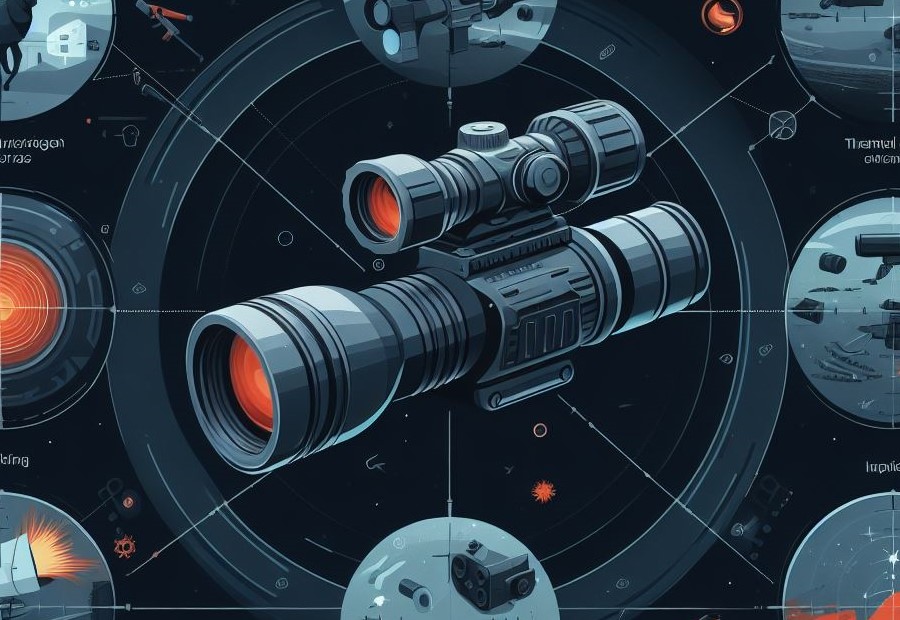
Discover the diverse world of night vision scopes with a focus on the different types available. From Generation 1 to Generation 3, Digital Night Vision to Thermal Scopes, each sub-section will unveil the unique features and capabilities of these innovative optical devices. Get ready to dive into the realm of enhanced vision and discover the cutting-edge technologies that revolutionize our ability to see in the dark.
Generation 1
When considering a night vision scope, it’s important to assess your specific needs and requirements. Generation 1 night vision scopes were the first commercially available night vision devices. These scopes amplify available light, including moonlight and starlight, to produce a visible image.
They are more affordable compared to later generations, making them a popular choice for casual users. The image quality of Generation 1 scopes is generally lower compared to later generations. They have a shorter range and detection capability, usually up to around 75-100 yards.
Generation 1 night vision scopes are a good option for those on a budget or for recreational use, where long-range or high-quality imaging is not essential. However, if you require enhanced image quality, greater range, and more advanced features, you may want to consider higher generations, such as Generation 2 or 3.
Take into account factors like magnification, field of view, and durability to ensure you choose a night vision scope that suits your intended application.
Generation 2
Generation 2 night vision scopes, also known as Gen 2 scopes, have made significant advancements compared to Generation 1 scopes. These scopes have improved image quality, enabling better clarity and detail in low-light conditions. This is achieved through the use of microchannel plates and enhanced signal amplification techniques.
When using Generation 2 scopes, you can expect to see objects up to 200 yards away, even in complete darkness. They also provide a wider field of view, making it easier to scan larger areas effortlessly. This makes them ideal for tasks such as surveillance and wildlife observation.
Moreover, Generation 2 scopes are designed to be more durable and resistant to various weather conditions. They can withstand harsh elements such as rain and dust, ensuring their longevity and reliability when used in outdoor settings.
Considering your budget is important when purchasing a Generation 2 night vision scope. Although they may be more expensive than Generation 1 scopes, the performance and capabilities they offer are worth the investment.
Generation 3
While Generation 3 night vision scopes provide top-of-the-line features, they are more expensive compared to lower generations.
If you are looking for the best performance and highest image quality in low-light conditions, Generation 3 night vision scopes are the ideal choice. They offer enhanced clarity and resolution, allowing you to see objects with greater detail and sharpness. With various magnification levels, you can zoom in on distant targets while still maintaining a wider field of view for better situational awareness.
In terms of range and detection, Generation 3 scopes outperform previous generations, allowing you to detect and identify targets in darker environments over a longer distance. Additionally, these scopes are built to withstand rugged conditions and adverse weather, ensuring their durability and reliability in the field.
However, it’s important to note that Generation 3 night vision scopes come at a higher price point compared to lower generations. If budget is a concern, you may consider other options. Nevertheless, if you prioritize top-of-the-line performance and image quality, Generation 3 scopes are the way to go.
Remember to carefully evaluate your needs and requirements before making a decision. Consider factors such as image quality, magnification, range, durability, and budget. By doing so, you’ll be able to choose the perfect Generation 3 night vision scope for your specific needs and preferences.
Digital Night Vision
When it comes to night vision scopes, digital night vision is a popular option. Here are some key points to consider:
- Resolution: Digital night vision scopes offer high-resolution imagery, allowing for clear visibility in low-light conditions.
- Image Quality: These scopes utilize digital sensors to capture and enhance images, providing sharp and detailed visuals.
- Range: Digital night vision scopes have varying detection ranges, typically ranging from 100 to 300 yards, depending on the model.
- Compatibility: Many digital night vision scopes can be easily integrated with other devices such as smartphones or tablets, allowing for easy sharing and recording of images and videos.
- Power source: These scopes often come with rechargeable batteries or USB charging options, providing convenience and flexibility.
Fact: Digital night vision technology has rapidly progressed in recent years, offering improved image quality and enhanced features compared to earlier generations.
Thermal Scopes
When considering thermal scopes, it is important to keep in mind several key factors. Firstly, the quality of the thermal image is determined by its resolution. Opting for higher resolution thermal scopes, such as those with 640×480 or 384×288 pixels, will provide clearer and more detailed images.
The refresh rate of a thermal scope refers to how frequently the image is updated. Opting for higher refresh rates, such as 60Hz or 30Hz, will result in smoother and more fluid images.
The detection range of a thermal scope indicates how far it can detect heat signatures. It is crucial to select a scope with a detection range that suits your specific needs, whether it’s for hunting, surveillance, or other applications.
Thermal scopes come with various levels of magnification, ranging from 1x to 16x or more. Consider the level of magnification required for your intended use, as higher magnification may be beneficial for long-range observation.
The battery life of a thermal scope is crucial, especially for extended outdoor use. Look for scopes with long-lasting batteries or the ability to be powered by external power sources.
In addition to these considerations, it is worth noting that thermal scopes can be used in a variety of applications, including hunting, search and rescue operations, and surveillance. They are particularly effective in low-light and complete darkness scenarios, as they can detect heat signatures rather than relying on visible light.
One fascinating fact is that thermal scopes have revolutionized the way we perceive the world in darkness, allowing us to see and navigate with ease even in complete darkness.
Applications of Night Vision Scopes
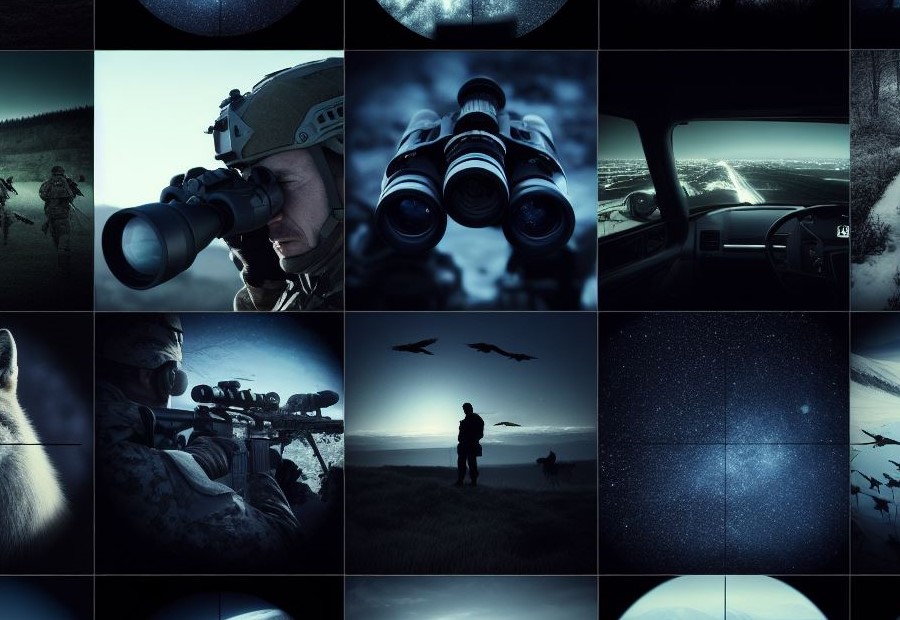
Night vision scopes have revolutionized various fields with their remarkable capabilities. In this section, we’ll uncover the wide-ranging applications where night vision scopes are making a significant impact. From enabling military personnel and law enforcement agencies to operate with enhanced vision in challenging environments, to assisting hunters and wildlife observers in nocturnal quests.
Furthermore, night vision scopes have become indispensable tools for security and surveillance purposes, ensuring safety and vigilance. Lastly, outdoor enthusiasts find great utility and enjoyment in using night vision scopes for their recreational activities. Let’s dive deeper and explore these fascinating applications.
Military and Law Enforcement
In the field of military and law enforcement, night vision scopes are instrumental in enhancing visibility and improving situational awareness. When selecting a night vision scope for military and law enforcement applications, several factors should be considered:
- Performance: It is essential for the night vision scope to have exceptional image quality, enabling clear and detailed visibility in low-light or dark conditions. Additionally, it should provide enhanced detection capabilities to accurately identify targets.
- Magnification and Field of View: Military and law enforcement operations require a night vision scope with adjustable magnification levels and a wide field of view. These features contribute to better target acquisition and tracking.
- Range and Detection: For effective long-range target acquisition, the night vision scope should possess a significant range. Additionally, it should offer superior detection capabilities to identify potential threats or suspects at longer distances.
- Durability and Weather Resistance: Given that military and law enforcement operations often occur in harsh environments, the night vision scope must be rugged and weather-resistant. It should be capable of withstanding challenging conditions, including extreme temperatures, humidity, and water immersion.
- User-Friendly Interface: The night vision scope should feature an intuitive interface and user-friendly controls. This ensures that military and law enforcement personnel can quickly adapt to and effectively utilize the scope during critical situations.
- Budget: While considering all the above factors, it is crucial to find a night vision scope that aligns with the allocated budget for military and law enforcement equipment.
Hunting and Wildlife Observation
Hunting and wildlife observation are popular applications for night vision scopes. These scopes provide a distinct advantage in low-light or dark conditions, allowing hunters and wildlife enthusiasts to see clearly and observe animals without disturbing their natural behavior.
With a night vision scope, hunters can accurately identify targets and determine the range for a more precise shot. The image quality of the scope is crucial for distinguishing between different animals and assessing their size and movements. A higher magnification and wider field of view are beneficial for tracking animals and scanning larger areas.
Durability and weather resistance are essential factors to consider when choosing a night vision scope for hunting and wildlife observation. These activities often involve outdoor environments, so the scope should be able to withstand rough handling and adverse weather conditions.
Budget is another important consideration. Night vision scopes range in price, and it is crucial to find a scope that fits within your budget without compromising on quality or performance.
Night vision technology was initially developed for military use during World War II, allowing soldiers to see and navigate in the dark. It has since evolved and become widely used in various civilian applications such as hunting, wildlife observation, and security.
The advancements in night vision technology have greatly improved the ability to observe and track animals without disturbing their natural habitat. This has contributed to the conservation efforts and increased the overall understanding of wildlife behavior.
Today, night vision scopes have become an indispensable tool for hunters and wildlife enthusiasts, providing them with a unique and exciting experience in the great outdoors.
Security and Surveillance
Security and surveillance are important applications of night vision scopes. These scopes play a vital role in the operations of law enforcement agencies and private security companies to effectively monitor and protect property, detect intruders, and gather valuable evidence.
The exceptional ability to provide clear visibility in low-light conditions gives security personnel a significant advantage, enabling them to promptly detect potential threats from a considerable distance. Night vision scopes equipped with cutting-edge image enhancement technology deliver superior image quality, enabling improved identification of individuals or objects even in complete darkness.
When it comes to selecting a night vision scope for security and surveillance purposes, range and detection capabilities are crucial considerations. It is essential to choose a scope that offers an ample range, ensuring comprehensive coverage of the intended monitoring area.
Moreover, the scope should possess outstanding detection capabilities, enabling reliable identification of individuals or objects, even when positioned at significant distances. In addition to these factors, durability and weather resistance are essential aspects to consider for security and surveillance applications. These scopes often face exposure to harsh environmental conditions and must withstand rugged settings.
It is worth mentioning that thermal imaging night vision scopes are particularly invaluable for security and surveillance operations. These scopes excel in detecting heat signatures, facilitating the identification of individuals or objects that might be attempting to conceal themselves or evade detection. This advanced technology significantly enhances the effectiveness and efficiency of security and surveillance operations, ensuring the utmost safety of personnel and property.
Outdoor Recreation
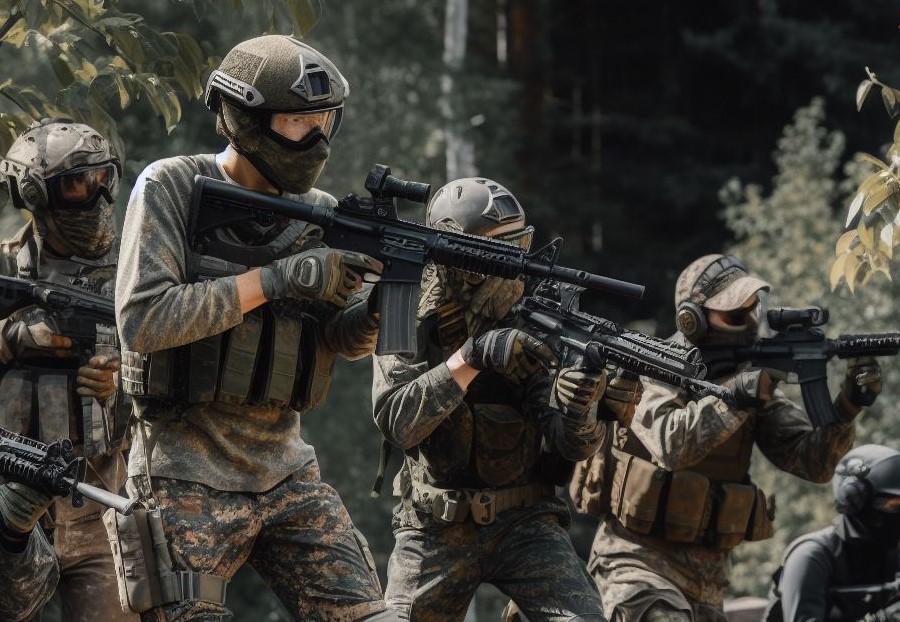
When it comes to outdoor recreation, choosing the right night vision scope is crucial. To enhance your outdoor experience, here are some key factors to consider:
- Image Quality: Make sure to opt for a night vision scope that provides high resolution and clear images. This will greatly enhance your outdoor recreation activities.
- Magnification and Field of View: Consider the scope’s magnification power to determine its ability to bring your target closer. Additionally, a wider field of view allows you to observe more of the surrounding area.
- Range and Detection: Check the scope’s range and detection capabilities. This will determine how well you can see in low-light conditions and spot objects or wildlife.
- Durability and Weather Resistance: Since outdoor activities can expose the scope to rough conditions, it’s essential to choose a durable and weather-resistant option. This way, it can withstand various environments.
- Budget: Keep your budget in mind when selecting a night vision scope for your outdoor recreation needs. Identify the features that are essential to you and find a scope that fits within your price range.
By carefully evaluating these factors, you can choose a night vision scope that will enhance your outdoor recreation experience, whether you’re engaging in wildlife observation, camping, or exploring remote areas.
Factors to Consider When Choosing a Night Vision Scope
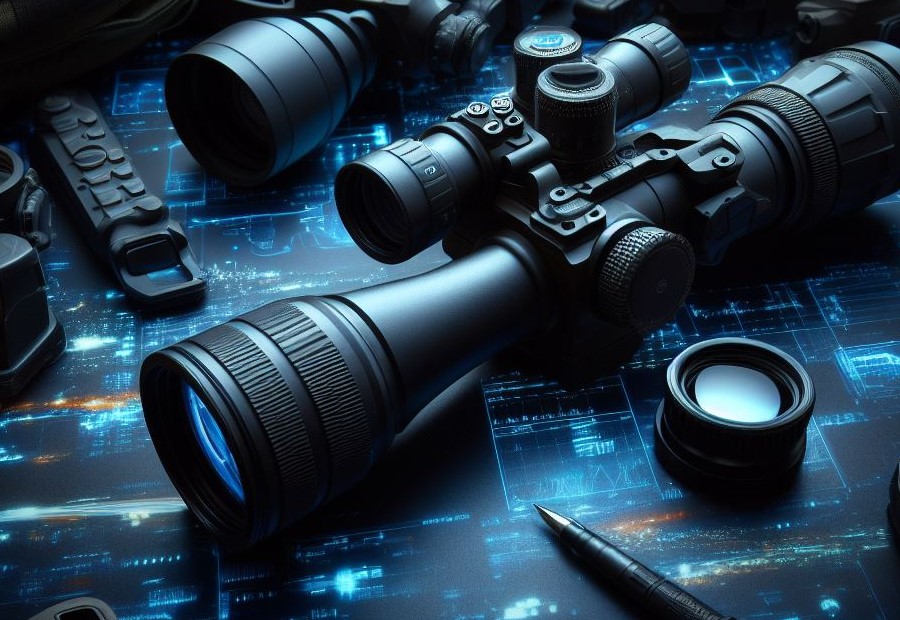
When it comes to choosing a night vision scope, there are several key factors to consider. In this article section, we’ll dive into what these factors are and how they can impact your decision. From image quality to magnification and field of view, range and detection capabilities, durability, weather resistance, and even budget considerations, we’ll explore it all. So, if you’re looking to make an informed choice for your night vision needs, keep reading!
Image Quality
Image quality is a critical factor to consider when selecting a night vision scope. The clarity and detail of the images produced by the scope can have a significant impact on your ability to identify targets or observe wildlife in low-light conditions.
- Resolution: When choosing a night vision scope, it is important to look for one with a high-resolution display, measured in pixels. Higher resolution allows for sharper and more detailed images.
- Sensor Sensitivity: The sensitivity of the sensor plays a crucial role in determining how well the scope can capture and amplify available light. Opting for a higher sensitivity will result in brighter and clearer images.
- Noise Reduction: To provide a cleaner and more accurate image, a good night vision scope will incorporate noise reduction technology to minimize visual noise or distortion.
- Optical Coatings: Quality optical coatings, such as anti-reflective coatings, can enhance image quality by reducing glare and improving light transmission. This results in better contrast and clarity.
- IR Illuminator: An infrared (IR) illuminator is beneficial for enhancing image quality in complete darkness. It is recommended to choose a night vision scope with a powerful and adjustable IR illuminator for improved visibility in challenging conditions.
Considering these factors of image quality will assist you in selecting a night vision scope that provides clear and detailed visuals. This will enable you to effectively utilize the scope for various applications such as hunting, surveillance, or outdoor recreation.
Magnification and Field of View
When choosing a night vision scope, it is crucial to consider the magnification and field of view. The magnification determines how close the objects will appear, while the field of view determines the width of the area you can see through the scope.
| Magnification | Field of View |
| High magnification | Narrow field of view |
| Low magnification | Wide field of view |
For example, a night vision scope with high magnification allows you to see distant objects clearly, but it reduces the width of the area you can see. On the other hand, a night vision scope with low magnification provides a wider field of view, allowing you to see a larger area, but the objects may appear smaller and less detailed.
The optimal magnification and field of view depend on your specific needs and preferences. For activities that require spotting and tracking moving targets, a wider field of view is preferable to ensure you don’t lose sight of the target. On the other hand, if you require high accuracy for long-range shooting or surveillance, a higher magnification will be beneficial.
Consider the conditions and purposes you will be using the night vision scope for to determine the ideal combination of magnification and field of view that suits your needs.
Range and Detection
When considering the range and detection capabilities of a night vision scope, there are several factors to keep in mind:
- Optical zoom: Night vision scopes with higher magnification options can provide a longer range for detection. A scope with a 6x magnification will allow you to see objects at a greater distance compared to one with a 3x magnification.
- Objective lens size: The larger the objective lens, the more light the scope can gather, resulting in improved detection range. A scope with a 50mm objective lens will typically have a greater range compared to one with a 30mm lens.
- Infrared illuminators: Some night vision scopes come with built-in infrared illuminators that emit infrared light to enhance visibility in complete darkness. The power and distance of the illuminator can affect the detection range of the scope.
- Generation technology: Night vision scopes are categorized into different generations based on the advancements in technology. Higher generation scopes generally offer better range and detection capabilities. Generation 3 scopes, for example, provide superior performance compared to Generation 1 or Generation 2 scopes.
- Environmental conditions: Factors such as weather, lighting conditions, and presence of obstacles can impact the effective detection range of a night vision scope. It’s important to consider these factors when choosing a scope.
The development of night vision technology has greatly revolutionized various fields including military, law enforcement, and wildlife observation. From early infrared devices used during World War II to modern digital and thermal scopes, advancements in range and detection capabilities have enabled better targeting, surveillance, and situational awareness in low-light or nighttime conditions.
Durability and Weather Resistance
Durability and weather resistance are two crucial factors that should be taken into account when selecting a night vision scope. These scopes are commonly used in the outdoors, where they might be exposed to various weather conditions and rough handling.
To ensure durability, it is essential to choose a night vision scope that is specifically designed to withstand rugged use. Look for scopes that are crafted from durable materials such as aluminum or magnesium alloy, as they possess excellent strength and resistance to impact. Additionally, scopes with protective coatings can further enhance their durability by preventing scratches and corrosion.
Weather resistance is a key feature that a night vision scope should possess. It is advisable to select scopes that are either waterproof or at least water-resistant, as they can endure rain or humidity without getting damaged. Scopes with fog-proof capabilities, such as nitrogen purging or O-ring seals, can also effectively prevent internal fogging that might occur due to changes in temperature or high humidity.
Temperature tolerance is an important consideration as extreme temperatures can affect the performance of a night vision scope. Look for scopes that have a wide operating temperature range, allowing them to function properly in both hot and cold environments. This ensures that you can rely on the scope’s performance regardless of the weather conditions.
Another vital aspect to consider is shock resistance, as night vision scopes may experience rough handling or accidental drops. It is beneficial to choose scopes that have built-in shock resistance features, such as shock-absorbing materials or reinforced construction. These features can safeguard the internal components of the scope and preserve its functionality even after minor accidents.
By carefully considering both the durability and weather resistance of a night vision scope, you can make an informed decision and invest in a reliable and long-lasting device that can withstand the challenges of outdoor use.
Budget
When considering a budget for a night vision scope, it is important to find a balance between affordability and quality. Here are some factors to consider:
- Price range: Night vision scopes can range in price from affordable to high-end. Determine your budget before starting your search.
- Needs and requirements: Consider what you will be using the night vision scope for and the specific features you require. This will help you narrow down your options within your budget.
- Image quality: While budget scopes may not have the same image quality as more expensive options, it is still possible to find scopes that offer decent image clarity and resolution.
- Magnification and field of view: Consider the level of magnification you need for your activities. Keep in mind that higher magnification often comes with a higher price tag.
- Battery life: Check the battery life of the night vision scope and consider the cost of batteries or rechargeable options.
- Customer reviews: Read reviews from other users to get an idea of the reliability and performance of the night vision scopes within your budget.
With these considerations in mind, you can find a night vision scope that fits your budget without compromising on quality and functionality.
Frequently Asked Questions
What is a night vision scope?
A night vision scope is an optoelectronic device that allows users to see in the dark by enhancing ambient visible light and converting near-infrared light into visible light. It consists of an image intensifier tube, a protective housing, and may have a mounting system. Night vision scopes are sophisticated tools used for various applications, including hunting, surveillance, and military operations.
How does a night vision scope work?
A night vision scope works by using either optoelectronic image enhancement or digital image enhancement technology. Optoelectronic image enhancement technology uses optical lenses and an electronic vacuum tube to capture and amplify visible and infrared light. Digital image enhancement technology, on the other hand, converts light into a digital signal using a CMOS sensor, enhances the image electronically, and displays it on an LCD screen. Both technologies enable users to pierce through the veil of darkness and see clearly in low-light conditions.
What are the benefits of using a digital night vision scope?
A digital night vision scope offers several benefits over traditional scopes. It provides optimal visuals in all lighting conditions and can easily switch between day and night modes. It also offers a full-color display, as opposed to the monochrome green image typically seen in traditional scopes. Additionally, digital scopes often have features such as IR laser sight, Wi-Fi connectivity, and the ability to store images and videos digitally, making them versatile and convenient hunting gear.
Why are ATN scopes known for their excellence in optics?
ATN scopes are renowned for their excellence in optics due to their use of high-quality lenses and image intensifier tubes. The advanced optics employed by ATN scopes ensure superior performance and precision, delivering unmatched clarity and resolution. These scopes offer hunters an unparalleled edge in the field, allowing them to lead the game with confidence and accuracy.
How do night vision goggles differ from night vision scopes?
Night vision goggles, also known as night optical/observation devices (NOD) or night-vision goggles (NVG), are similar to night vision scopes but are designed to be worn on the head, providing hands-free use. They typically consist of two image intensifier tubes, one for each eye, and offer binocular vision. Night vision goggles are useful for activities that require mobility in low-light conditions, such as moving around at night or in dark buildings.

